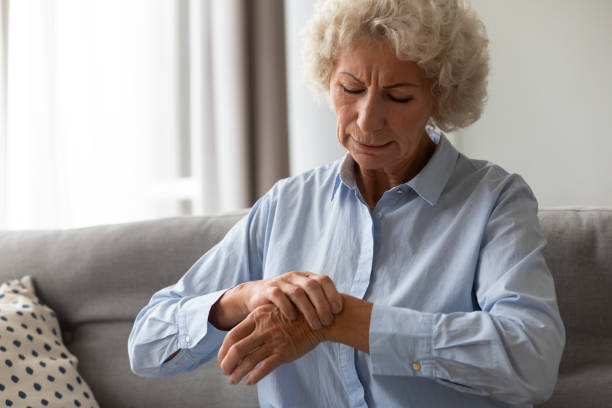Chronic pain is one of the most common health challenges faced by seniors, affecting nearly half of the older adult population. This persistent discomfort—often resulting from conditions like arthritis, neuropathy, osteoporosis, or past injuries—can significantly impact mobility, mood, and overall quality of life. Unlike acute pain that signals injury or illness, chronic pain lingers for months or even years and can be particularly debilitating without proper intervention.
Aging naturally brings changes in muscles, joints, and bones. But while some degree of physical decline is expected, chronic pain doesn’t have to be a defining part of aging. Modern approaches to pain management increasingly emphasize non-pharmacological treatments, and among the most effective is physical therapy.
Contents
- 1 The Role of Physical Therapy in Managing Chronic Pain
- 2 Targeted Exercise: A Pillar of Pain Relief
- 3 Manual Therapy and Pain Modulation Techniques
- 4 Balance, Coordination, and Fall Prevention
- 5 Empowering Seniors Through Education
- 6 A Non-Addictive, Sustainable Solution
- 7 Conclusion: Restoring Comfort, One Step at a Time
The Role of Physical Therapy in Managing Chronic Pain
Physical therapy offers a holistic, evidence-based solution to chronic pain that focuses on restoring function, enhancing strength, and promoting independence. Rather than masking symptoms with medication, physical therapy aims to correct underlying issues contributing to pain. This makes it especially valuable for seniors, who are often more vulnerable to the side effects of long-term drug use, such as dizziness, constipation, or increased fall risk.
A physical therapist begins by evaluating a senior’s pain points, physical limitations, and goals. From there, they design a personalized plan incorporating techniques that may include targeted exercises, manual therapy, balance training, and education on body mechanics. The goal is to build resilience and reduce reliance on painkillers while enabling seniors to move with greater ease and confidence.
Targeted Exercise: A Pillar of Pain Relief

Contrary to the belief that rest is the best remedy for pain, inactivity often worsens symptoms. Muscles weaken, joints stiffen, and the risk of falls increases. Physical therapy counters this with strategic movement. Gentle strength training, flexibility routines, and aerobic conditioning not only ease discomfort but also improve posture, circulation, and stamina.
In cases of arthritis—a leading cause of chronic pain among seniors—low-impact exercises like water aerobics, resistance bands, or chair yoga can enhance joint mobility and reduce inflammation. These activities are tailored to individual capacity, ensuring that seniors remain safe while staying active.
Manual Therapy and Pain Modulation Techniques
Beyond exercise, many physical therapists use hands-on techniques to relieve pain and improve mobility. Manual therapy includes joint mobilization, soft tissue massage, and trigger point release. These approaches help reduce muscle tension, increase blood flow, and ease stiffness in affected areas.
Additionally, modalities like heat therapy, cold packs, ultrasound, and electrical stimulation (such as TENS) can be incorporated into sessions. These tools are used strategically to modulate pain signals and enhance the therapeutic benefits of movement-based interventions.
Balance, Coordination, and Fall Prevention
Chronic pain can alter the way seniors walk or stand, sometimes unconsciously favoring one side of the body to avoid discomfort. Over time, this imbalance can lead to poor posture and an increased risk of falls, one of the most serious health threats for older adults.
Physical therapy addresses these risks head-on. Through targeted balance training and gait correction exercises, therapists help seniors regain control and coordination. This not only relieves pain but also builds the confidence needed to maintain an active lifestyle. A strong sense of balance reduces the likelihood of injuries, allowing seniors to stay engaged in everyday activities without fear.
Empowering Seniors Through Education
A crucial component of physical therapy is education. Seniors are taught how to move mindfully, adjust their environment to minimize strain, and recognize the early signs of overexertion. These lessons extend beyond the clinic and into daily life, where the impact of pain is most felt.
Learning proper body mechanics—how to lift objects, sit correctly, or get in and out of bed—can significantly reduce stress on joints and muscles. Seniors also benefit from being involved in their care, gaining a sense of agency that empowers them to make informed decisions about their health.
A Non-Addictive, Sustainable Solution
As concerns about opioid dependency grow, physical therapy stands out as a safe, sustainable option for chronic pain management. While medications may still have a role in a comprehensive pain strategy, physical therapy provides long-term benefits without the risks of side effects or dependency.
This approach aligns with current geriatric care guidelines that emphasize function and independence over quick fixes. By addressing the root causes of pain and building strength over time, physical therapy offers seniors a proactive path toward comfort and mobility.
Conclusion: Restoring Comfort, One Step at a Time
Chronic pain can erode quality of life, but it doesn’t have to control it. For seniors, physical therapy provides not just relief but restoration—a chance to reclaim mobility, engage in meaningful activities, and reduce the burden of pain without relying solely on medication. With the right therapeutic approach, aging bodies can continue to move, thrive, and live with dignity.
Through individualized care, education, and encouragement, physical therapists become essential allies in the journey toward comfort and autonomy in later life. For every senior experiencing chronic pain, physical therapy offers hope rooted in motion and the promise of better days ahead.
